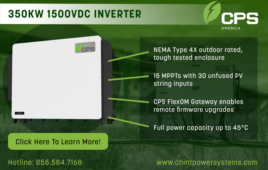
By Steven Wittenberg, Trina Solar Product Manager
Whether you’re a seasoned pro or looking to get started in residential solar installations, home site assessments are an important first step in this process.
Gathering relevant site-specific information is crucial for the PV system designer in order to design the best rooftop system for the home. Here are five critical considerations for residential solar installers conducting a home site assessment:
1. Identify obstructions
Solar panels need as much direct sunlight as possible. Anything in the way will cause shading that hinders system performance and reduces power output.
Obstructions can come from any direction, and may include vents, equipment, skylights, satellite dishes, snow guards, roof heaters, chimneys, and more. Tree branches in particular can cause shading both currently, and in the future as they grow. Be sure that the system layout avoids any areas of major shading or obstruction.
2. Determine the roof’s age, condition and position
Best practices recommends that the roof be in a good enough condition to not require re-roofing during the contract term or during the payback period. If a re-roofing happens during this period, it could create unnecessary costs to the contractor or the homeowner.
In addition to measuring the roof’s dimensions and pitch, it’s also important to get the azimuth orientation or direction. Obtaining the azimuth by hand requires using a magnetic compass to find the north-south axis. This finding can then be used to find the magnetic declination value for the ZIP code on the National Oceanic and Atmospheric Administration (NOAA) website. There are also free online azimuth tools that use digital maps and surveys to calculate this.
3. Match home energy use with PV system output
Effectively sizing the PV system to obtain the maximum sunlight harvest requires a careful balance of homeowner energy needs and their budget.
The first requires you to calculate your customer’s home electricity usage. If possible, try to get a year’s worth of the homeowner’s electricity bills, which can be used to obtain the average monthly usage. You can then compare this result with information from NASA’s Insolation at Specified Location table to learn the daily average number of hours per day the sun produces peak sunlight for that area.
The PV system should then be sized accordingly to meet the customer’s electricity demand and potential insolation. The size must also fit the roof’s available space, weight load and structural layout. This also includes accounting for snow loads and local wind speeds.
During this stage, be sure to educate the homeowner about implementing energy-efficiencies around the house. This helps reduce electricity consumption, which can boost the system’s ROI.

4. Electrical checks
Installation contractors should also obtain details on the home’s electric system. This may include whether the home has overhead or underground electric service, the voltage and amp size of the system, availability of breaker spaces, and the meter location relative to the house.
Further, this is a good time to check if any upgrades are necessary for the electrical main panel or the utilities’ electricity meter.
5. Recommend reliable high-powered PV modules
Unlike sprawling ground-mount PV installations, rooftop solar systems have limited space to work with. In order to maximize the energy output in this limited space, high-powered and reliable residential solar PV modules can be the answer to faster returns. At the same time, homeowners want reliable panels they can put on the roof and not have to worry about.
Want to know some more about reliable, high-powered residential solar modules? Contact Trina Solar today.
This is the fourth installment in a four-part series on the residential solar sector. Check out previous installments in this series here.
Sponsored content by Trina Solar





Tell Us What You Think!